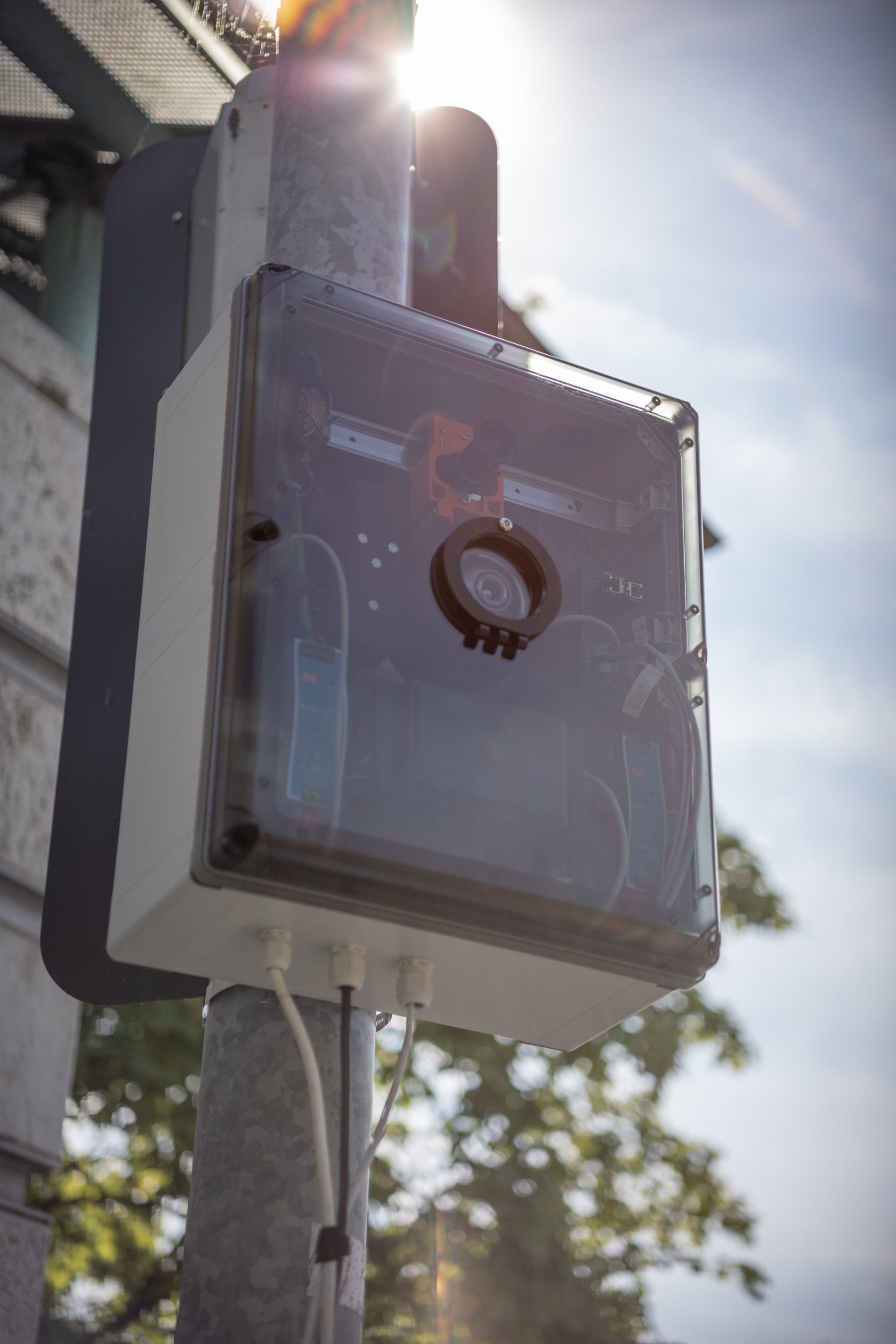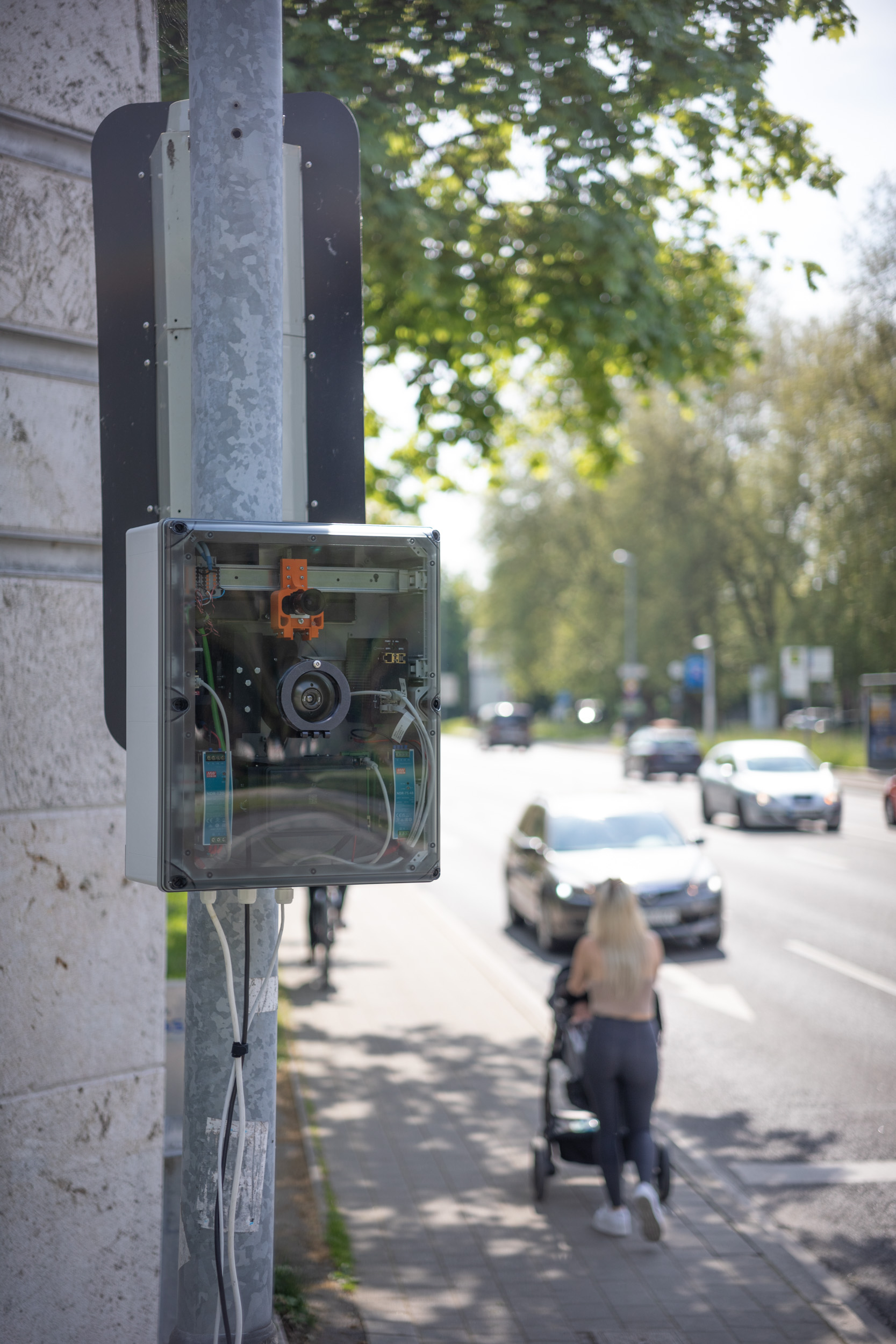Intelligent Traffic Analysis for Connected Mobility

Mobile Sensor Technology for the Acquisition, Analysis and Transmission of Traffic Data
In order to make assisted and automated driving more efficient, safe and sustainable, intelligent transportation systems require a comprehensive array of sensors for environment perception. In the near future, not only the vehicles will communicate with each other, but the the infrastructure will also be involved in this process, thus ensuring better assessment of traffic situations. In this context, traffic and risk analyses will become increasingly important as fixed components of connected mobility as a concept. Fraunhofer scholars developed a mobile, AI-based senor unit that acquires and analyzes data, which is the necessary basis for intelligent infrastructure. This sensor unit allows making predictions about the traffic flows of passenger cars, trucks, bicyclists as well as pedestrians, and it enables communication with autonomous vehicles or advanced driver assistance systems in real-time. Real-time communication is also an important instrument in traffic management, for example, for coordinating traffic light settings or for determining accessible routes for emergency responders. The system can be operated highly flexibly: it is equally possible to connect the sensor box to existing infrastructure and to use it as a mobile sensor pole that works autonomously over longer periods of time. The technology is expected to have been installed in several German cities by the end of 2022.
The work was carried out in close cooperation with Fraunhofer IAIS and Fraunhofer FHR, headed by Fraunhofer IVI. The project receives funding within the scope of the Fraunhofer Cluster of Excellence Cognitive Internet Technologies CCIT gefördert.
